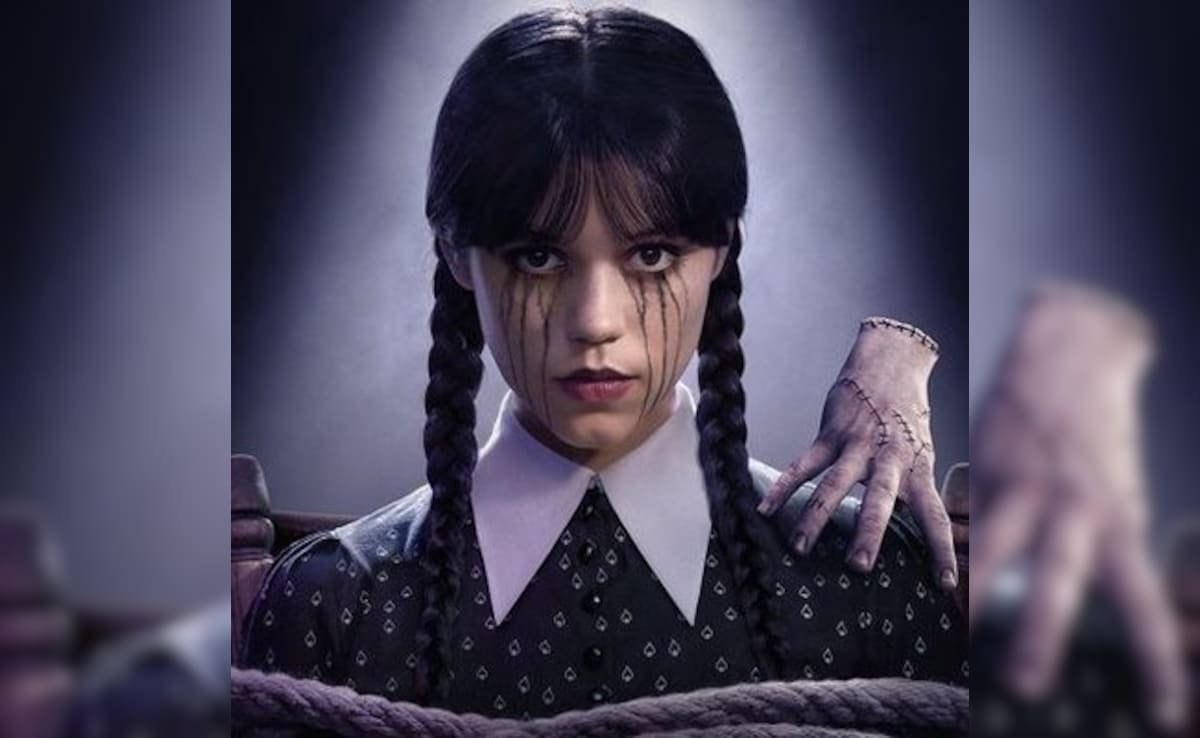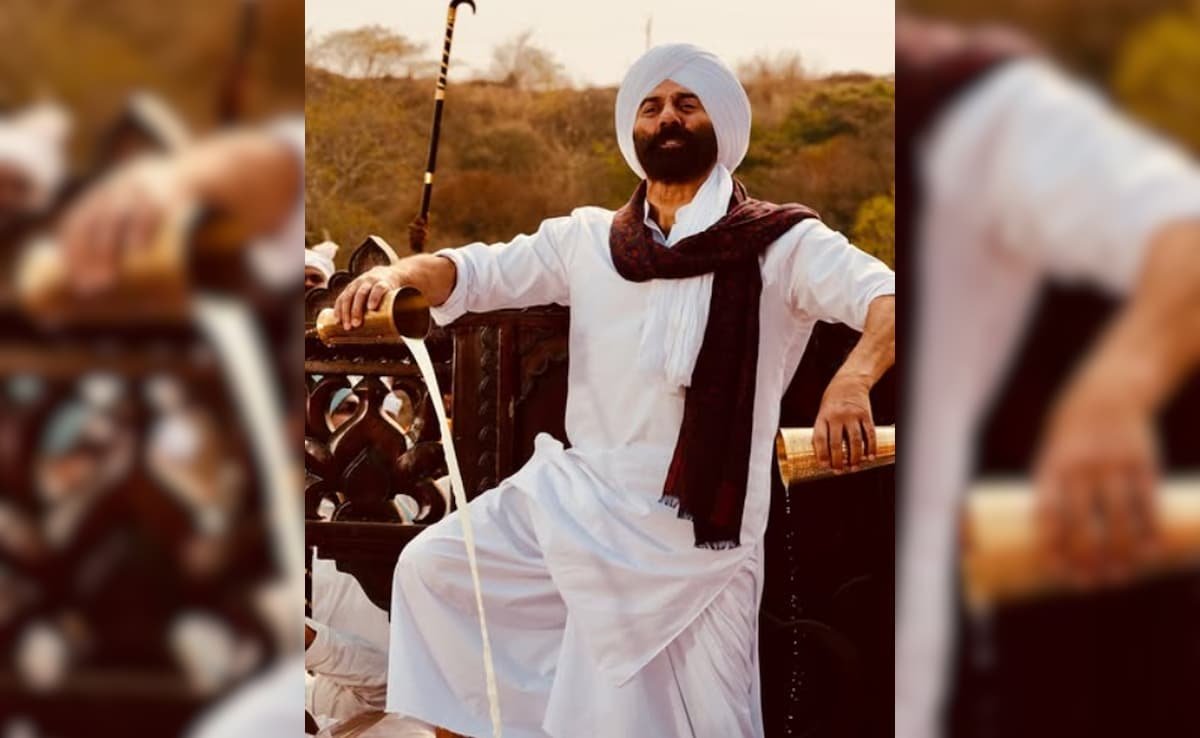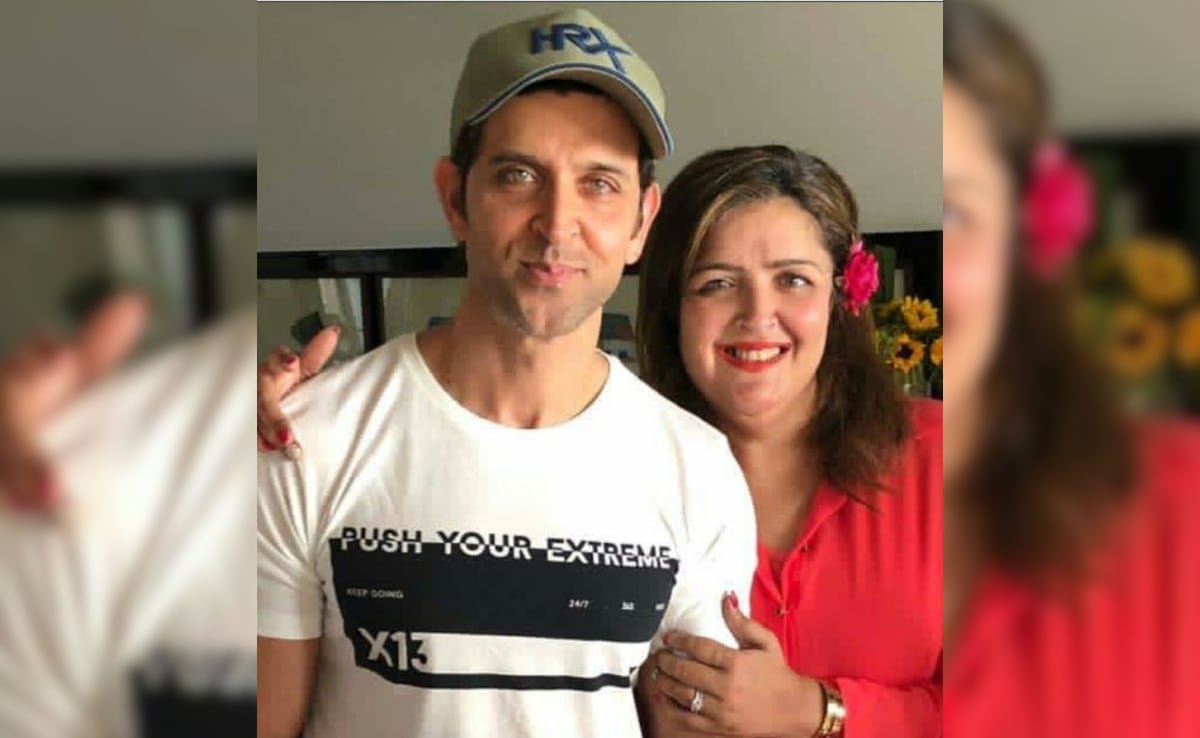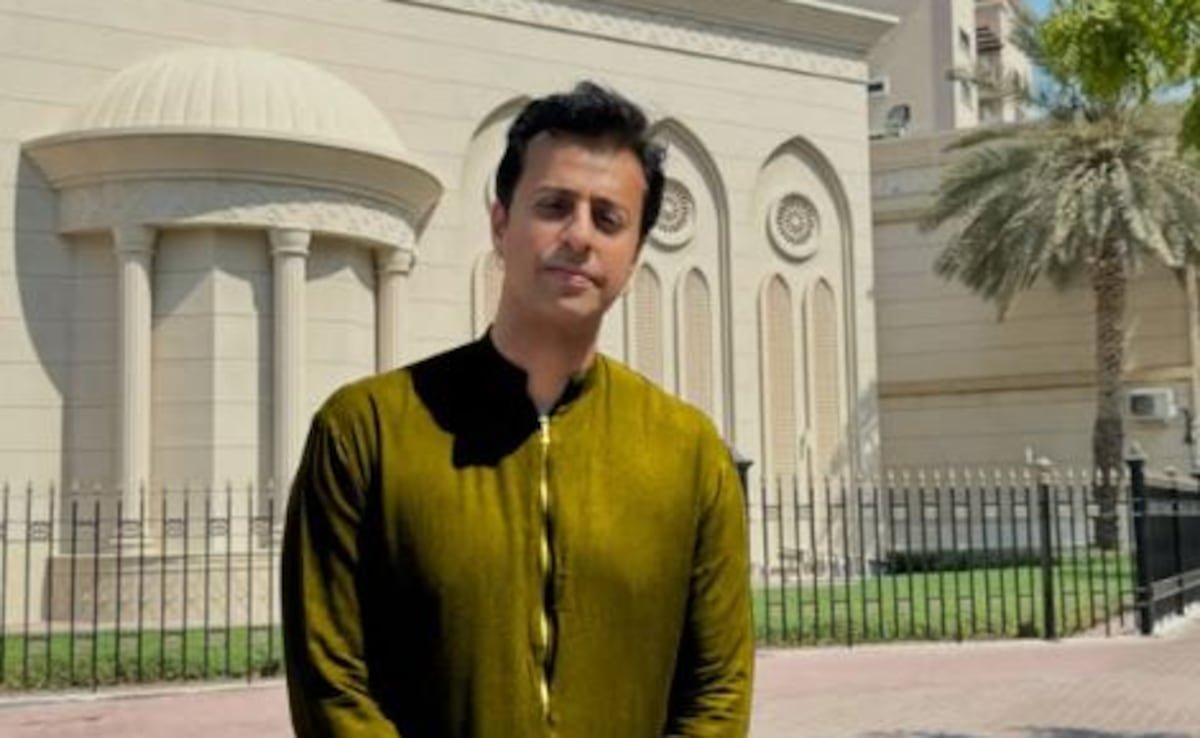Aaya hun, kuch toh leke jaunga…
Mai toh kehta hu aap purush hi nahi hai… maha purush hain maha purush…
Aaila! Ooi Ma!
If you know, you know. And if you don’t, well, your pop culture education is incomplete and frankly, your friends have been too kind. It’s a rare alchemy when a film ceases to be simply a film and turns into a language, a shared secret code of one-liners and catchphrases, passed down through the years like family heirlooms. This week, the cult comedy Andaz Apna Apna (AAA) returns to cinemas.
Let’s take a stroll down memory lane and see what was really brewing behind the scenes. The story behind the iconic jodi of Amar-Prem, Karishma-Raveena, Teja, Gogo, and of course, Raabert (never Robert) is as wonderfully chaotic as the film itself. But somewhere between the madness and confusion, the magic happened.
Advertisement – Scroll to continue

The film was produced by the late Vinay Sinha, who was the manager of the legendary actor Amjad Khan and also collaborated with him on several productions. Currently, the intellectual property rights and ownership of Andaz Apna Apna belong to his children-daughters Priti and Namrata Sinha, and son Amod Sinha – all independent producers in their own right. As with great affection they set off to bring the film back in cinemas, they share with me the interesting story of how this classic comedy was created more than three decades back.
The year was 1990. Vinay Sinha took the plunge and launched his own film production house. The first order of business was securing a leading man for his film. Enter Salman Khan, who had skyrocketed to stardom after the blockbuster Maine Pyaar Kiya (1989). Sinha was close to Salman’s father, the legendary screenwriter Salim Khan, and shared his ambitions with him. Salim Khan, or “Salim uncle” as Priti Sinha affectionately calls him, gave his blessing, saying, “You plan the film, Salman will do it. It was Salim uncle who made it happen.”

File photo of Vinay Sinha
Around the same time, action flick Ghayal had turned into a massive hit, introducing a debutant director named Rajkumar Santoshi. Sinha, eager to get started, was introduced to Santoshi by actor Dharmendra, the producer of Ghayal. Santoshi was planning another action film with Sunny Deol, but Sinha, armed with delicious home-cooked food, charmed him into directing his film first.
When Sinha mentioned that his younger brother was Aamir Khan’s manager, it was the golden ticket. Aamir, fresh off the massive success of Dil (1990), was instantly intrigued by the idea-and didn’t need much convincing to hop on board. Suddenly, it was a casting coup – Aamir and Salman, Bollywood’s heartthrobs, in a movie directed by the industry’s new golden boy, Rajkumar Santoshi. AAA was sizzling hot from the moment it was announced.
Dharmendra gave the ceremonial clap, and a young Sachin Tendulkar turned up for the muhurat shot. The story, surprisingly, was born from Santoshi’s fondness for the quirky world of Archie comics. Yes, the DNA of Amar and Prem, with their fluorescent fashion sense can be traced back to Riverdale but with desi twists. Along with writer Dilip Shukla, Rajkumar Santoshi envisioned a hilariously chaotic comedy brimming with quirky characters, wild plans, and enough one-liners to fuel decades of WhatsApp forwards.
The premise was charmingly ridiculous: two lovable buffoons Amar (Aamir Khan) and Prem (Salman Khan) compete for the hand (and fortune) of a wealthy heiress, all while accidentally stumbling into a plot involving an evil mastermind, Teja with ‘mark idhar hai’ (Paresh Rawal, in double duty).

Surprisingly, the breakout character of AAA turned out to be none other than Mogambo’s delightfully deranged bhateeja (nephew), Crime Master Gogo, played with manic brilliance by Shakti Kapoor. From “Suno suno duniya ke logon, sabse bada hai Mister Gogo” and “Aankhen nikaal kar gotiyaan khelta hoon” to the immortal “Aaya hoon toh kuch toh lootkar lekar jaaonga“, nearly every line he delivered turned into a punchline for the ages. But Shakti Kapoor wasn’t even the first choice for this now iconic role. Santoshi initially wanted Tinu Anand to play Gogo. But when dates didn’t align, fate handed the cape and boots to Shakti Kapoor.
And that’s not all. The film was also supposed to feature a side character named Zorambo, a hilarious riff on Mogambo from Mr. India. Played by Amrish Puri himself, Zorambo was written as Mogambo’s mopey brother: a villain with zero enthusiasm. If Mogambo was all “Khush hua,” Zorambo’s trademark line was the exact opposite-“Zorambo… khush nahi hua.” A man perpetually grumpy, Zorambo was basically a chronic rotlu. Now that would’ve been iconic, but the duration didn’t permit that,t and Santoshi dropped the track from the script.
And then there was Paresh Rawal in double dose. Long before Baburao Ganpatrao Apte in Hera Pheri, there was Teja. Rawal’s comedic genius in AAA was a masterclass in deadpan hilarity. From “Teja main hoon, mark idhar hai” to managing his dimwit sidekicks Bhalla and Raabert, Rawal’s double act was pure gold. Without ever raising his voice, he proved that sometimes, playing it straight is the funniest move of all.

For the music, director Rajkumar Santoshi tipped his hat to the golden era. A devoted O.P. Nayyar fan, he brought music composer Tushar Bhatia to infuse the soundtrack with a vintage vibe-think Ye Raat Aur Ye Doori and Elo Ji Sanam Hum Aa Gaye, songs that wouldn’t feel out of place on a black-and-white vinyl record. True to the spirit of the film, the music was meant to be fun, cheeky, and just a little bit nostalgic. The film was planned to be made in one year. Namrata Sinha remembers, “Back then, there were no big studios. Just independent producers borrowing money from financiers at high interest. Since the film was planned to be completed in one year, my father obtained the budgets keeping this time frame in mind.”
Unfortunately, things went haywire right from the beginning.
As Andaz Apna Apna was being filmed, the media was busy fueling the rivalry between its two stars, Aamir Khan and Salman Khan. While their on-screen chemistry as Amar and Prem was pure bromance, off-screen, things were less than harmonious. The two actors reportedly had a strained relationship, with Aamir later admitting on Karan Johar’s talk show that he found Salman rude and inconsiderate during the shoot.

Actor Shehzad Khan, who played Bhalla, revealed that Aamir-Salman clashes were mainly due to their different work ethics. Aamir, the punctual perfectionist, would show up at the Madh Island set by 7-7:30 am, while Salman, known for his more laid-back approach, often rolled in closer to 10 or 11 am. Shehzad, who was close to Salman, often had to step in as the peacemaker, trying to smooth over the tension between the two stars.
Despite the off-screen friction Amar’s overconfidence and Prem’s general cluelessness as recipe for their on-screen chemistry was nothing short of electric. From their very first face-off on the bus-where the two characters try to outwit each other with fake stories of wealth, bravery, and importance-their chemistry is pure comedic gold even with humour that might sounds ridiculous on paper. Sample this:
Prem- Ye Laal jacket aapne kahan se liya ? America se liya hoga?
Amar- Nahin nahin maine New York se liya hai
Prem- New york! achha achcha, maine socha America se liya

Remember, Amar-Prem’s harebrained plan to kidnap Ram Gopal Bajaj involving a moped, and a level of confidence only true fools can muster. Or the iconic scene where Amar and Prem spike each other’s food with laxatives, leading to a game of revenge that ends in gastrointestinal disaster. Aamir’s gleeful delivery of ‘Mai khaoo laddu, tu khaye kebab, ab karata hu tujhe julaab‘ is etched into the minds of every fan who’s ever watched the film. It’s childish, over-the-top, but utterly hilarious.
“Aamir loved giving retakes. He was never satisfied. We joked that he could make the world record in retakes, while Salman’s process was spontaneous,” recalls Amod Sinha.
During the making of the film, tensions weren’t limited to the leading men. The two leading ladies, Raveena Tandon and Karisma Kapoor, who had just begun their careers, were reportedly not on speaking terms throughout the film’s shoot. “Karisma aati thi toh Raveena chali jati thi. Bahut mushkil se woh film bani thi,” Aamir Khan had said in an interview. Their conflicts simmered beneath the surface, and the leading stars did not want to shoot with each other. Remembering the making of the film, Raveena Tandon had said in an interview, “Aamir and Salman weren’t talking to each other, Karisma and I weren’t talking and neither were Salman and Raj ji. I don’t know how that film got made.”
Producer Vinay Sinha’s son, Amod Sinha, who also worked as an assistant director on AAA, saw the chaos unfold up close, told me, “It was the kind of film where most actors shared scenes-Aamir and Salman were together in almost every frame, so were Raveena and Karishma,” he recalls. “So we needed everyone’s ‘combination dates’, but once the schedule went off track, getting them all together again was nearly impossible. They were all busy actors.”

In fact, if you pay close attention, you’ll notice Salman Khan’s ever-evolving hairstyle. In some scenes, he’s sporting the long locks of his Saajan era while in others, it’s the shorter cut from Karan Arjun days. That’s because what was meant to be a quick one-year shoot stretched across a span of years, thanks to financial hiccups and scheduling nightmares.
As the delays piled up, director Rajkumar Santoshi shifted focus to Damini pushing AAA further down his priority list. Funds began to dry up, and the struggle was real. But through it all, producer Vinay Sinha remained undeterred. “I remember, despite everything-the delays, the money troubles-Dad always said, koi baat nahi… we’ll finish this film,” recalls his daughter, Priti Sinha. And thank God he did.

Just when it felt like Andaz Apna Apna was slipping into the abyss of unfinished films with the cast scattered, interest fading, and hope wearing thin, it was Salman Khan who stepped in. Amod Sinha, son of producer Vinay Sinha, remembers the moment vividly. “Salman said, ‘The producer has already suffered enough. He must be protected. We will complete this film.” True to his word, Salman gave fresh dates, and reminded everyone of their commitment. “A lot of people had turned negative,” Priti Sinha says, “but Salman stood by my father like a rock. No one talks about it, but without him, this film may never have seen the light of day. We’ll forever be indebted to Salman Khan. That’s the truth.”
The final schedule kicked off, and this one brought the laughs. It was during this leg that some of the film’s most side-splitting scenes, including the iconic climax, finally made it to camera. But if you’re imagining meticulously rehearsed scenes and colour-coded scripts, Amod Sinha sets the record straight, “There was no bound script. That just wasn’t the norm back then. A lot of scenes were literally written on the sets.” Much of the film’s now-iconic dialogue was the result of on-the-spot inspiration. In fact, some of the best-loved scenes were simply the director’s creative instructions and then the willingness to let the actors run wild.

Take the moment when Prem (Salman) and Crime master Gogo face off. No script, no rehearsal-just two actors and a camera. Amod laughs, “We were all in shock when we saw what happened. And now it’s one of the most celebrated moments of the film.”
The energy on set was infectious, sometimes too infectious. “Our cinematographer Ishwar Bidri would laugh so hard during takes, we had to stop rolling and wait for him to calm down,” Amod chuckles. “And this wasn’t once or twice. It happened a lot.”
Like Sholay, Andaz Apna Apna was an ensemble riot. The side characters, many of whom appeared for only a handful of scenes, went on to achieve a kind of cult status normally reserved for rockstars. Bhalla, Raabert, the lovelorn poet Anand Akela, and the stern Inspector Pandey, each brought their own delicious slice of absurdity. “And remember, there was even a naqli Shashi Tharoor,” Priti Sinha chuckles, recalling the most bizarre testament to the film’s enduring legacy that came decades later. A blurry screen grab from the bus scene began doing the rounds on social media. The image featured Amar (Aamir Khan), Prem (Salman Khan), and, sandwiched between them, a man with a distinctly Shashi Tharoor-like presence with tousled hair, arched brows, and an unmistakable air of Tharoorian charm.

Cue the internet meltdown.
“Is that… Shashi Tharoor in Andaz Apna Apna?” became the question that launched a thousand memes. The buzz was so intense that Shashi Tharoor himself had to step in and clarify: “This is not me.” The man in question was found to be Indravardan Tailor, a junior artist who sadly passed away long before his moment of accidental internet fame and the film’s resurrection as a cult classic. Still, it’s a fitting tribute to Andaz Apna Apna’s charm that even its background actors became headline-worthy decades later.
Finally, a release date was announced, and AAA was all set to release in 1993. “In 1993 we announced the release date and did a bit of publicity. But suddenly Raj Kumar Santoshi decided that certain portions needed to be reshot. So there were reshoots despite already spending on the promotions.”
The final scene shot was the one where Raveena and Karisma were tied to a pillar. As the director called “pack-up,” the crew began celebrating, but Rajkumar Santoshi had one last twist. “Raj ji told the actresses he wouldn’t untie them unless they spoke to each other,” recalls Amod Sinha, “everyone burst out laughing- and eventually, they had no choice but to talk it out.”

And finally, after years of chaos, clashes, and cinematic serendipity, Andaz Apna Apna was ready. The release date was set: November 4, 1994. It is often said that the film was released without publicity. Even Aamir Khan and Paresh Rawal have mentioned the same recently. As a school-going movie buff, I remember the silence.
A major Aamir-Salman film is quietly slipping into theatres. Priti Sinha differs: “That’s only partly true. You can’t compare it to today’s film promotions. Back in 1994, film promotions didn’t come with hashtags and Insta Reels. It was just print, radio, and a few nascent satellite channels.” When the release date was locked, producer Vinay Sinha realised the lead actors were tied up with other projects in different cities. But after four years and a budget that had ballooned four times its original plan, he refused to delay it any longer. Andaz Apna Apna would hit theatres, publicity or not.
With two big stars and a celebrated director, too much was expected from the team, but Andaz Apna Apna didn’t exactly set the box office on fire. In the film media and in general perception, AAA was quickly branded a flop. The label was echoed by the film media and even its own stars and the director. Even in a recent interview Aamir Khan remarked, “The film didn’t even run for a week.”
But the producers disagree. Priti Sinha tells me, “It was not a flop as it is made out to be. It was a slow starter and was even declared tax-free in Maharashtra. Who knows it better than us? The reality is my dad earned profit from the film.”
But it wasn’t until Andaaz Apna Apna found new life on cable TV and later overran the wild world of social media, that it truly flourished into a cult classic. A film that nobody really understood then went on to capture our pop culture one ‘Aaila!’ at a time.

It wasn’t a grand entrance, but it lingered. Somewhere between the laughs and the lunacy, it carved out a permanent home in our hearts. And now, years later, when we carelessly toss in a “Galti se mishtake ho gaya” or cheer a buddy with “Shabash mere cheetey shabash,” or call someone a “maha purush” with a sly grin, we’re not just quoting a film, we’re acknowledging that Andaz Apna Apna became part of us, reminding us of the beautifully ridiculous things in life.
And yes, the producers let slip that Andaz Apna Apna is gearing up for a full-blown cinematic franchise. “Soon there will be an announcement for AAA-2 as well as the other plans of the franchise,” concludes Priti Sinha.
Ulti ginti chalu karo, Raabert!
(The Making Of is a fortnightly column by author and film expert Yasser Usman.)














Leave a Reply